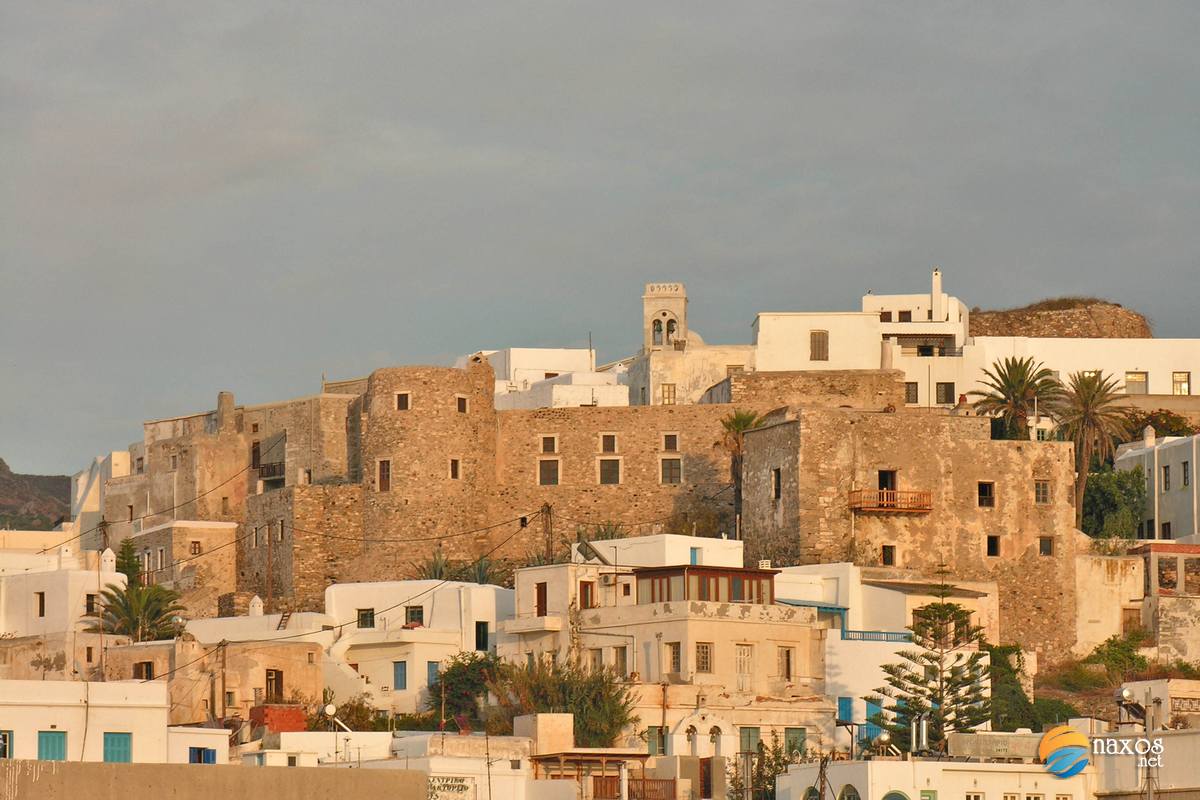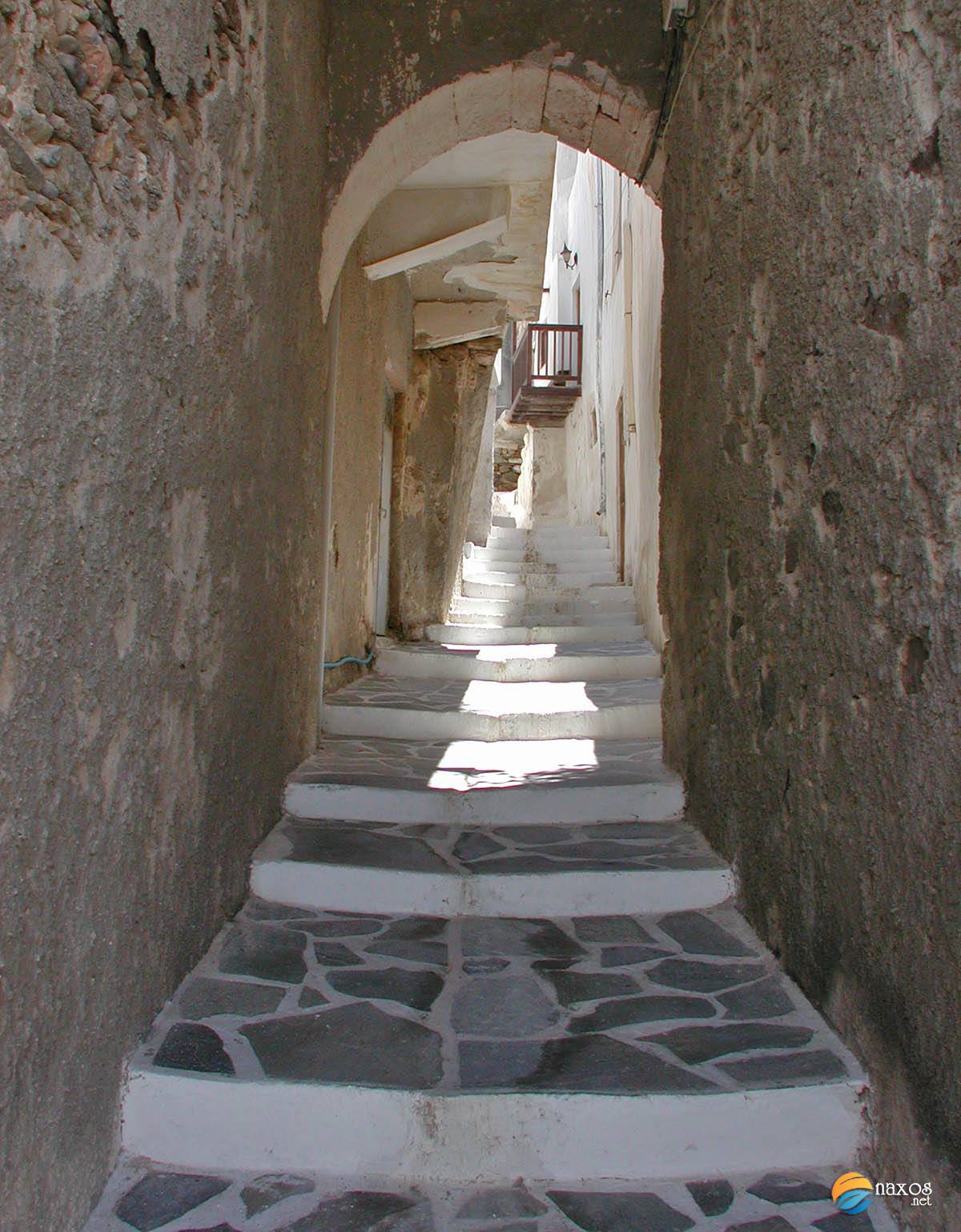Venetian rule of Naxos took place between 1207 and 1537. Around 1207 AD, the Venetian Marco Sanudo landed with his men at Agiassos and after a siege conquered the island and occupied the islands of Naxos and Andros, whereupon he founded the Duchy of the Aegean Sea with Naxos as the capital. This event ushered in the Latin dominance in the region which lasted for centuries till 1537, 84 years after the fall of Constantinople, today’s Istanbul (1453). Sanudo gradually subjugated all the Cycladic islands, except Mykonos and Tinos which were controlled by another Venetian family, the Ghisi family.
The subjugation of 18 islands in the Aegean, places Sanudo in a position to found the Duchy of Naxos, with the island as its seat, thereby creating a small feud. The capital was moved from Apaliros to present day Hora, whose hill forms a natural position for an acropolis (a fortification). On this site, Sanudo built the fortified castle we see today, using materials from the ancient city. The island's nobility and feudal rulers built their towers around the castle and outside it for extra protection, for summer housing or to exercise better control of the populace. On the island's northern coast, there are also a number of more recent towers. One such is the Agia Pyrgos (Holy Tower) which dates from the 17th century and was at some stage destroyed by fire, another is on the outskirts of the village of Galini. It is the fortified monastery of Panagia Ypsilotera.

Despite their Venetian origins, and due to their geopolitical status, the Sanudo’s acknowledged the Latin Emperor of Constantinople as superior authority rather than Venice. Venice being much further away, they chose to follow a policy of independence via distance and an alignment with a nearby power. However, friction with Venice on this policy grew, and the Duchy eventually became a Venetian protectorate.
According to the tradition of feudalism, Sanudo divided the island into the various feuds which were allocated to the nobility he established as his court.
The period of the Sanudo ascendancy was marked by turbulence. The Sanudo’s were forced to be on a continuous war footing to deal with the rival Ghisi family, various pirates roaming the Aegean, interventions from Venice, including the Byzantine fleet of Emperor Vatatzes of Nicaea who had never abandoned his claims on the Cyclades.
The Sanudo dynasty produced seven dukes whose last one, Niccolo Dalle Carceri, was murdered in 1383 by Francesco Crispo, ruler of the island of Milos, during a hunting outing near the village of Melanes. Francesco Crispo was apparently pro-Venetian.
Francesco had married into the Sanudo family. He took over the Duchy and the Crispo dynasty he founded, produced a line of 12 dukes.
By the time the notorious Ottoman admiral Hayreddin Barbarossa conquered the Cyclades in 1537-38, the Aegean Sea Duchy was already in a state of administrative disarray and decline.
The Duke of Naxos, Giovanni IV Crispo, was permitted to remain in charge of his territory on condition that he paid heavy taxes to the Ottoman treasury. The enforcement of these taxes exacerbated the dire economic situation the duchy was already in. Giovanni’s son, Jacopo IV Crispo, succeeded him upon his death in 1564. Two years later he was imprisoned by the Turks, following complaints for greater fairness in the administration to Sultan Selim II (1566-1574) by local Greek notables.
The end of the Crispi dynasty, marked the ushering of new Latin feudal lords. Prominent families, like Barozzi, Della Rocca, De Modena, Grimaldi and Justiniani, created larger estates either by purchasing land or acquiring it through marriage.
The new order of feudalism, brought about intensified the adverse conditions of serfdom for the local populace.

Take a quick tour on Naxos island and discover its most impressive features. You may start with the following:
What's new (or old) on Naxos, from our blog articles.